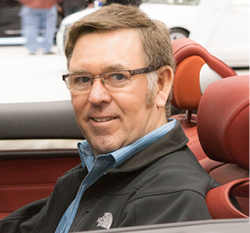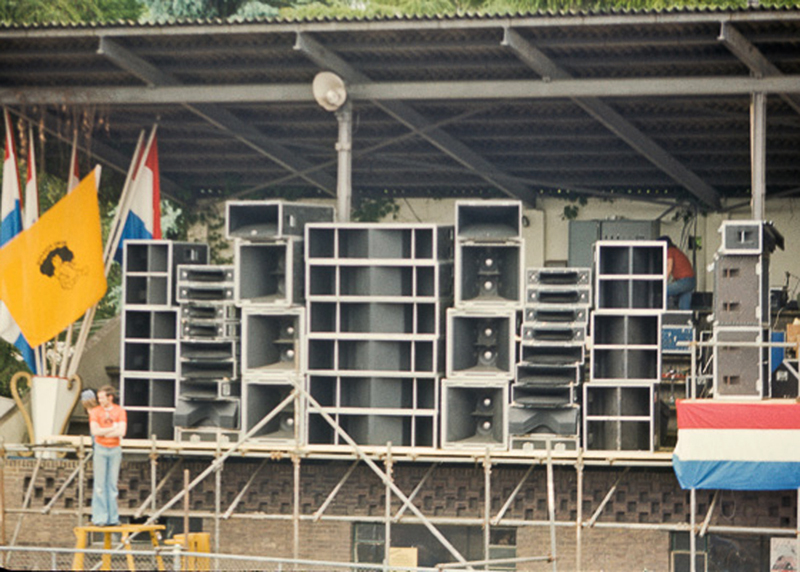
The most common touring PA in Europe was made by Watkins Electric Music (WEM), but often each band on a bill would use a different system.
“You had to cooperate,” he says, referencing a 24-hour festival in Essen, Germany. “It was insane. There were rows and rows of PA, so we hooked up with the people who were scheduled close to our time to coordinate taking their PA down while we shoved ours forward. And I’m talking about some pretty big walls of PA.”
There were many other interesting moments along the way. At the same Essen gig, for example, the system went down and Whelan watched panic grow in the eyes of one of the artists he personally idolized as the crowd began to get agitated.
On the same gig, he unknowingly taunted Ritchie Blackmore of Deep Purple and immediately dealt with the sinking feeling that his budding career might suddenly come to a screeching halt. (More about that here.)
Not every story is amusing, he adds. “I was babysitting the monitor system during the filming of the Pepsi commercial with Michael Jackson where he was burned by the pyro. In the aftermath, when everyone was still in shock and huddled around Michael laying on the stage, I had the delicate mission of retrieving the handheld wireless mics from his band members. That was undertaken with supreme diplomacy.”
His move from FOH to system design was more a natural progression than a change in career path, an extension of a fascination with pushing the envelope, as he’d done when designing a horn-loaded mid range box for Manfred Mann. So when leading touring company Electrotec (Electrosound/TFA) offered him a job in 1975, he notes, “I didn’t say yes until they added, ‘We’re going to put the world’s largest PA together.’ Who wouldn’t say yes to that?”

As chief engineer at Electrotec, Whelan designed systems for artists such as Rod Stewart, Tom Petty, Bob Dylan, and Bob Marley, and for venues with capacities ranging from 5,000 to 100,000, spending 19 years with the company. “The gear was fantastic. We were all tech-heads, and 24/7, all we were interested in was making music good and loud,” he recalls enthusiastically.
Shifting Gears
While he continued to reside in London, Whelan spent an inordinate amount of time on tour, and finally relocated to Los Angeles in 1978 after being in the U.S. an average of 10 out of 12 months a year over a long period. Even after taking on system design full time in 1983 he still spent a fair chunk of time working on the road.
“If you’re not going to jump in the swimming pool, you’re not going to find the best way to swim,” he explains. “And if you’re not on the road, people think you’re not necessarily designing solutions for their situations.”
